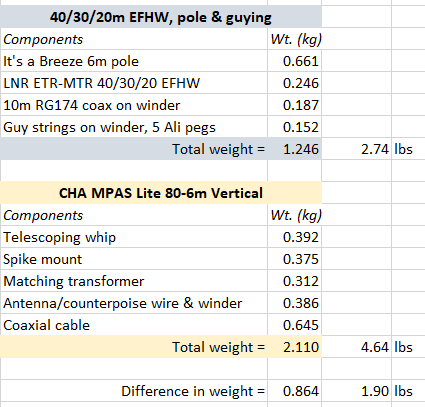This is shaping up to be an interesting thread.
Some activators want ultimate Dx, some want to qualify the summit before freezing up. So there’s no one ‘ideal’ antenna solution.
This could get like the old myth about the Sixties where you had to be either a Beatles fan or a fan of the Rolling Stones but not both [I was both]. I’ve used linked dipoles [usually in inverted V config] and EFHWs [horizontal or sloper] happily for years but very recently I have also become a fan of my new [Cha MPAS Lite] vertical for its quick & easy deployment, small footprint and ruggedness in high winds. I’ll select a wire antenna or the vertical depending on circumstances for each activation on the day.
I know how you feel. Not much extra weight in my case …

I’m sure you’re absolutely right for the lower HF bands but my limited A vs B comparisons with my vertical [not a hamstick] suggests that on 20m it can go either way. I field-tested my MPAS Lite in that stormy weather we had a few weeks ago on my local SOTA summit. The wind was going right through me and the 17ft [5.2m] long telescoping whip was bending at the top but the whole thing seemed very stable despite gusting.